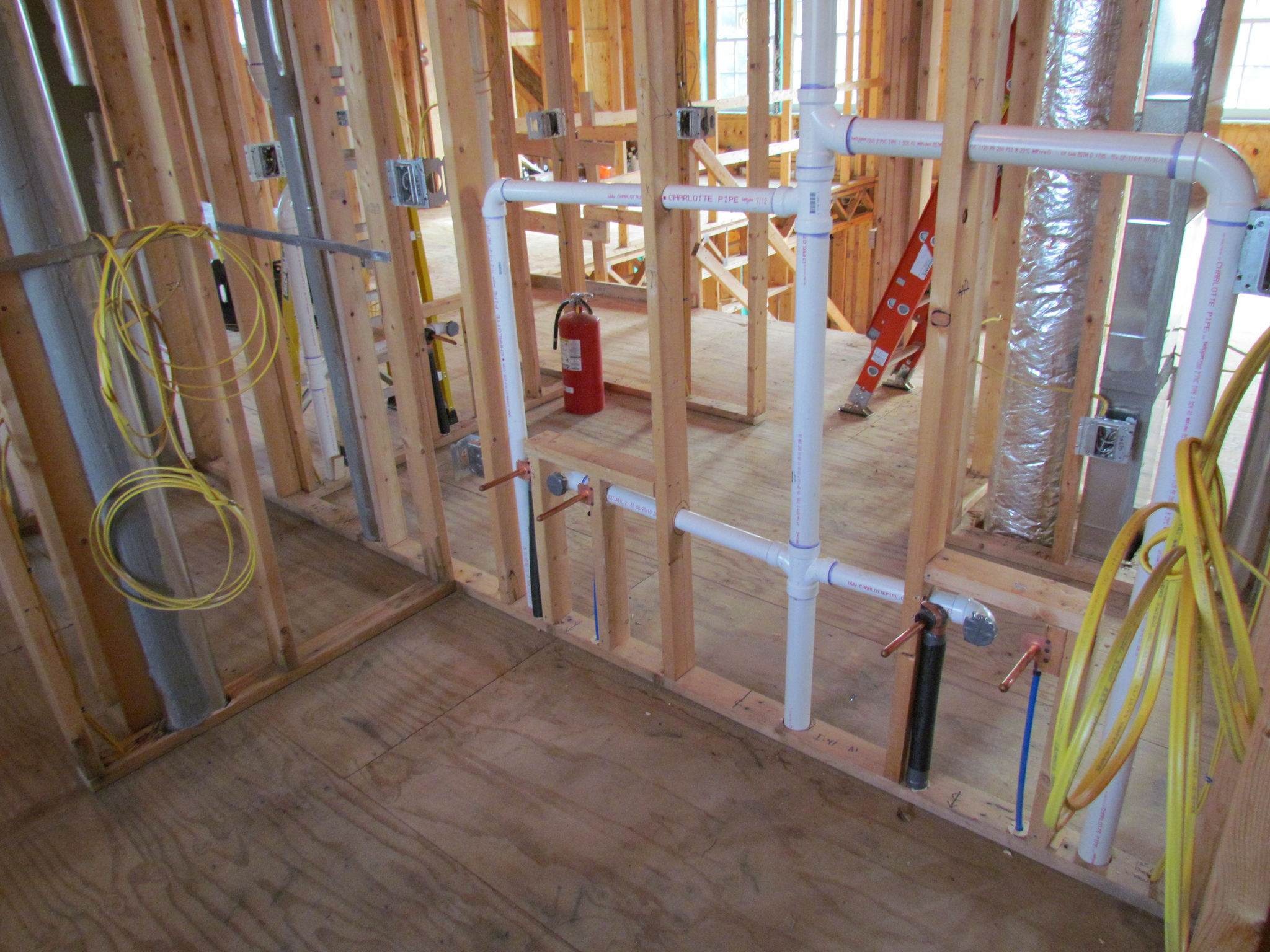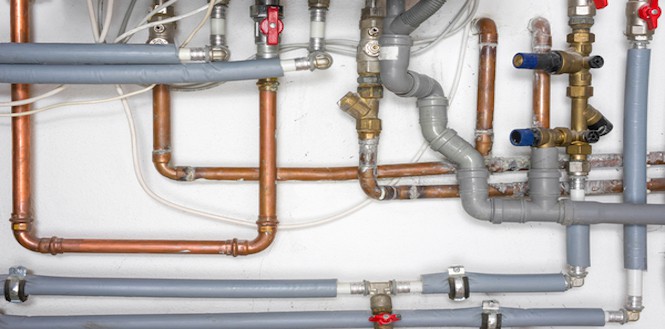What're your opinions on Understanding Your Home's Plumbing Anatomy?

Recognizing how your home's plumbing system functions is crucial for every property owner. From providing tidy water for alcohol consumption, food preparation, and showering to safely removing wastewater, a well-kept plumbing system is important for your family members's health and comfort. In this detailed overview, we'll explore the complex network that makes up your home's plumbing and offer suggestions on maintenance, upgrades, and managing typical problems.
Intro
Your home's pipes system is more than just a network of pipes; it's a complicated system that ensures you have access to clean water and reliable wastewater elimination. Recognizing its parts and how they collaborate can assist you stop pricey repairs and guarantee everything runs smoothly.
Fundamental Parts of a Pipes System
Pipelines and Tubes
At the heart of your pipes system are the pipelines and tubes that carry water throughout your home. These can be made of various materials such as copper, PVC, or PEX, each with its benefits in terms of resilience and cost-effectiveness.
Fixtures: Sinks, Toilets, Showers, etc.
Components like sinks, bathrooms, showers, and tubs are where water is used in your house. Comprehending how these fixtures attach to the plumbing system assists in diagnosing troubles and planning upgrades.
Valves and Shut-off Points
Valves regulate the circulation of water in your pipes system. Shut-off shutoffs are essential throughout emergency situations or when you require to make repairs, allowing you to isolate parts of the system without interrupting water flow to the entire residence.
Water System System
Main Water Line
The primary water line links your home to the metropolitan water system or an exclusive well. It's where water enters your home and is dispersed to various fixtures.
Water Meter and Pressure Regulator
The water meter measures your water usage, while a pressure regulator makes certain that water moves at a secure stress throughout your home's plumbing system, stopping damages to pipes and fixtures.
Cold Water vs. Hot Water Lines
Understanding the distinction between cold water lines, which supply water directly from the major, and warm water lines, which lug heated water from the water heater, aids in repairing and preparing for upgrades.
Drain System
Drain Pipes and Traps
Drain pipelines lug wastewater far from sinks, showers, and commodes to the sewage system or sewage-disposal tank. Traps avoid sewage system gases from entering your home and likewise catch debris that can create clogs.
Ventilation Pipelines
Air flow pipes allow air into the water drainage system, protecting against suction that can slow down drain and trigger traps to vacant. Appropriate air flow is necessary for preserving the integrity of your pipes system.
Significance of Appropriate Drainage
Guaranteeing correct drain prevents back-ups and water damages. On a regular basis cleaning up drains pipes and maintaining catches can prevent costly repair services and prolong the life of your pipes system.
Water Heater
Types of Water Heaters
Hot water heater can be tankless or conventional tank-style. Tankless heating systems warm water as needed, while storage tanks save heated water for prompt use.
Updating Your Pipes System
Factors for Upgrading
Upgrading to water-efficient components or changing old pipelines can improve water high quality, reduce water expenses, and boost the value of your home.
Modern Plumbing Technologies and Their Advantages
Discover innovations like clever leak detectors, water-saving bathrooms, and energy-efficient hot water heater that can save money and decrease environmental effect.
Expense Factors To Consider and ROI
Determine the upfront prices versus long-lasting financial savings when taking into consideration pipes upgrades. Lots of upgrades spend for themselves with decreased energy costs and fewer repairs.
Just How Water Heaters Link to the Plumbing System
Recognizing how hot water heater connect to both the cold water supply and warm water circulation lines helps in detecting issues like not enough hot water or leaks.
Maintenance Tips for Water Heaters
Routinely purging your water heater to eliminate debris, checking the temperature level setups, and checking for leakages can extend its life expectancy and improve energy efficiency.
Common Plumbing Issues
Leakages and Their Reasons
Leakages can take place as a result of maturing pipelines, loose fittings, or high water pressure. Addressing leakages immediately protects against water damages and mold growth.
Clogs and Clogs
Obstructions in drains pipes and bathrooms are typically caused by purging non-flushable products or a buildup of grease and hair. Making use of drainpipe displays and being mindful of what goes down your drains can protect against blockages.
Indications of Plumbing Issues to Look For
Low tide stress, slow-moving drains pipes, foul odors, or abnormally high water costs are indications of prospective pipes problems that need to be addressed promptly.
Pipes Upkeep Tips
Regular Inspections and Checks
Schedule yearly pipes assessments to catch problems early. Search for signs of leaks, deterioration, or mineral build-up in taps and showerheads.
DIY Upkeep Tasks
Straightforward tasks like cleansing tap aerators, looking for bathroom leakages making use of dye tablets, or shielding revealed pipelines in chilly climates can prevent major pipes concerns.
When to Call an Expert Plumbing Technician
Know when a plumbing issue requires professional competence. Attempting complex fixings without correct understanding can lead to even more damages and greater repair work costs.
Tips for Reducing Water Use
Straightforward behaviors like taking care of leakages immediately, taking shorter showers, and running full loads of laundry and recipes can save water and lower your utility bills.
Eco-Friendly Pipes Options
Think about sustainable pipes products like bamboo for floor covering, which is durable and environment-friendly, or recycled glass for kitchen counters.
Emergency Preparedness
Actions to Take Throughout a Plumbing Emergency situation
Know where your shut-off shutoffs are located and just how to shut off the supply of water in case of a ruptured pipe or significant leak.
Relevance of Having Emergency Contacts Convenient
Maintain call info for regional plumbers or emergency situation services easily available for fast reaction throughout a plumbing crisis.
Ecological Impact and Preservation
Water-Saving Fixtures and Home Appliances
Installing low-flow taps, showerheads, and toilets can considerably lower water usage without sacrificing efficiency.
DIY Emergency Situation Fixes (When Appropriate).
Temporary repairs like using duct tape to spot a leaking pipeline or positioning a bucket under a dripping tap can minimize damage up until a specialist plumbing technician arrives.
Final thought.
Understanding the composition of your home's pipes system empowers you to preserve it properly, saving time and money on fixings. By adhering to routine upkeep routines and remaining educated about contemporary plumbing innovations, you can guarantee your plumbing system operates successfully for years ahead.
Exploring Your Homes Plumbing Anatomy
Water Supply System
Main Water Line: This is where water enters your home from the municipal supply or a private well. Water Meter: Typically located near where the main water line enters the property, it measures the amount of water used. Shutoff Valve: It s crucial to know where this is in case of emergencies. It allows you to turn off the water supply to the entire house. Pipes and Fittings: These distribute water throughout your home. Materials can include copper, PVC, or PEX. Drain-Waste-Vent (DWV) System
Drains: Located in sinks, showers, and tubs, these carry wastewater away. Traps: U-shaped pipes under sinks that hold standing water, blocking sewer gases from entering the home. Vents: Pipes that lead from the DWV system to the outside, preventing vacuum formation and allowing gases to escape. Sewer Line: Carries all wastewater from the home to the municipal sewer system or a septic tank. Fixtures and Appliances
Sinks, Toilets, and Showers Dishwashers and Washing Machines Water Heaters Maintenance Tips
Regularly check for leaks in exposed pipes and around fixtures. Inspect the water heater annually for signs of wear. Clean drains and traps to prevent clogs and odors. Know how to shut off water to individual fixtures. When to Call a Professional
Major leaks or burst pipes Installation of new pipes or fixtures Septic tank issues Remodeling projects that involve plumbing changes Conclusion
Understanding the anatomy of your home's plumbing is key to maintaining a functional and efficient system. Regular checks and knowing when to call in the experts can save you time, money, and stress.
https://www.mavyn.com/blog/exploring-your-homes-plumbing-anatomy

Do you appreciate reading up on Understanding Your Home's Plumbing Anatomy? Try leaving a remark down below. We will be happy to hear your views about this review. We are looking forward that you come back again before long. Sharing is caring. Helping people is fun. Thank-you for your time spent reading it.
Book Now